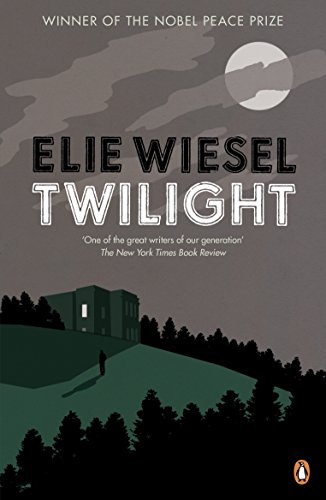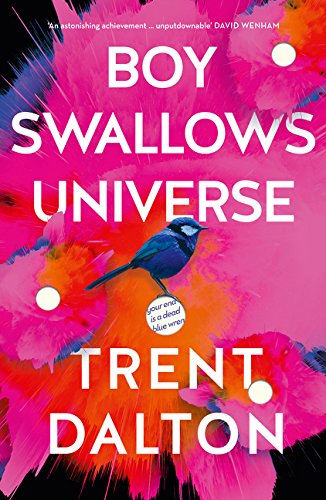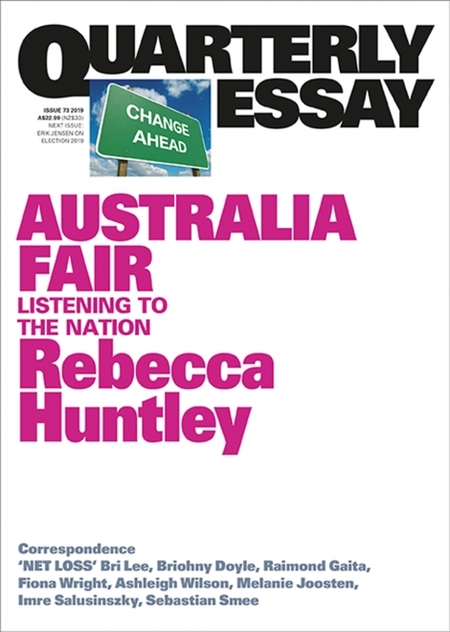Elie Wiesel, Twilight (1987, translated from the French Le Crépuscule, au loin by Marion Wiesel 1988;)
I was given this book as a birthday gift some years ago. I was finally spurred to read it by a moment in Russell Shorto’s Amsterdam when he says that Holocaust survivor Frieda Menco became an international activist ‘after hearing fellow Auschwitz survivor Elie Wiesel discuss his experiences’.
Elie Wiesel was awarded the Nobel Peace Prize in 1986. The Nobel Committee described him as ‘one of the most important spiritual leaders and guides in an age when violence, repression, and racism continue to characterise the world’, and his Wikipedia entry offers ample justification for that description. His writing of memoir and fiction about the Holocaust is just part of his extraordinary activism; it’s the part I’m interested in here.
His first book, published in 1956, was a memoir in Yiddish of his Holocaust experiences, And the World Remained Silent. Night (published in French in 1958, then in English translation in 1960) was a shorter version, focusing on his relationship with his father in the camps. According to Wikipedia, Night ‘now ranks as one of the bedrocks of Holocaust literature’. In the next years, he wrote the novels Dawn (published in French in 1960, and in English translation in 1961) and Day (1961/1962), making a trilogy that marked (again I’m quoting Wikipedia) ‘Wiesel’s transition during and after the Holocaust from darkness to light, according to the Jewish tradition of beginning a new day at nightfall’.
It’s reasonable to suppose that Twilight (especially in its original French title, which translates as ‘Twilight, at a distance’) is meant to be read as a footnote to that trilogy, an extra phase of the diurnal sequence. Not having read those earlier books, then, I’ve come to this one at a disadvantage: I suspect it picks up lines of argument from the trilogy, either amplifying them or refuting them. So bear in mind, if you read on, that I’m writing as someone who came in late. (Imagine reading only Harry Potter and the Deathly Hallows and none of the first six HP novels.)
Raphael Lipkin was a young Jew in Poland during the Second World War. His entire family was wiped out, mostly by the Nazis but some by the Soviets, but he survived thanks to the intervention of a character known only as the madman with veiled eyes, and Pedro, a heroic member of Briha, the underground organisation that helped Holocaust survivors escape Europe. The novel tells the story of his traditional Jewish family as the reality of the Nazi threat becomes clearer and eventually overtakes them. Intertwined with this narrative is the story, some decades later, of Raphael’s time spent in a New York psychiatric hospital where all the patients believe they are characters from ancient history. He goes to the hospital on the pretext of learning from the patients in his academic field of Jewish mysticism, but he is actually trying to find out what happened to Pedro.
The Holocaust narratives here are mostly stories of richly diverse Jewish life – there are Judaic scholars, historians, young people in love, Communists, Zionists. The focus is on the rich culture and community life that was being destroyed rather than on the horror of the process (though there are moments of horror). In the modern story, Raphael speaks constantly to the absent Pedro, whose name he seeks to clear, but though Raphael’s main motivation is to do with Pedro, that story becomes secondary to his engagement with the hospital inmates. He has substantial conversations with Adam, Cain, a prophet, a dead man, the ‘Messiah of mad people’, and finally God himself. As I read it, in all these conversations, Wiesel is addressing the question of how the Judaic religious tradition can deal with the fact of the Holocaust – is it possible to still believe that God exists, that life has meaning. I suspect that as a confirmed atheist, and from a Christian tradition to boot, I missed a lot of the nuance, and if a conclusion is reached it passed me by (though there is a revelation in the final pages that may amount to Wiesel’s theological conclusion, and that revelation is foreshadowed in the epigraph from Maimonides, ‘The world couldn’t exist without madmen’).
The passion and intelligence of the writing held me captive the whole time. As a for-instance, here’s part of a monologue from the mad Adam, early in the book, which states an extreme despairing response to the horrors of the 20th century:
Listen, God. What I am about to tell you is for your own good. Stop! Yes, God: Stop this senseless project. Believe me, even you who are omnipotent cannot succeed in this. You thought man would be your glory, the jewel of your crown. You make me laugh. Man is your failure. Face it. Give up your illusions. Wake up. Be considerate. Close the book before you turn the first page. Does it shame you to admit that I’m right? Then forget it’s my idea. Let it be my gift to you. Legally, philosophically, you will have fathered it. And you know what? Theologically too. All you have to say is: I tried, I was wrong. And, luckily for the world, I realised it in time. Thus, even if your dream will have lasted but one day, one lifetime, you will be applauded. By your angels and seraphim. By the countless souls who will escape the curse of being born only to die. By the trees that will not be felled by man. By the animals that will not be slaughtered. By the earth that will not be despoiled. And all of Creation, pure and resplendent, will say: Look how great is God, how admirable His honesty. He does not shrink from admitting His error. And yes, He can manage perfectly well without man …
(page 28-29)
As you see, this isn’t a book that offers easy answers. It’s not a comfortable read. But (and remember, I’m a man who said last week that I need a novel to be fun) it’s kind of exhilarating.
































